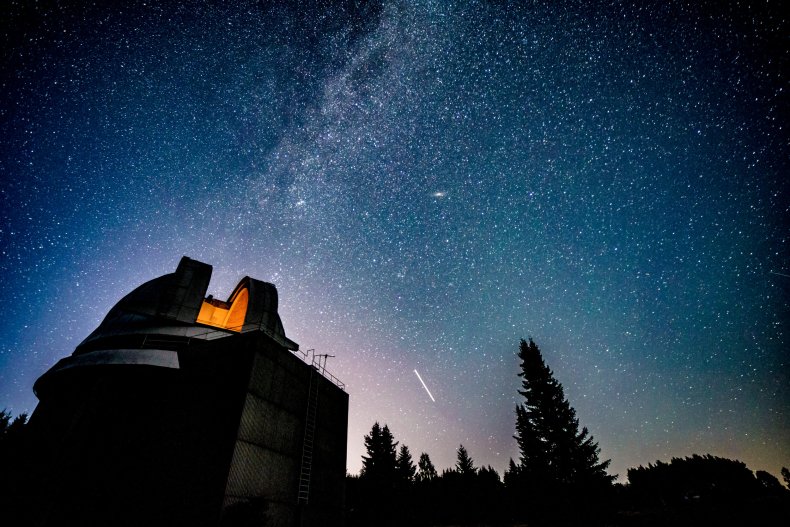NASA has added hundreds of new confirmed exoplanets to its list of known worlds in deep space, significantly boosting the number of faraway planets we know about.
The total number of new confirmed exoplanets is 301, which marks a large increase to the total of 4,569 that scientists have already discovered.
The reason that so many exoplanets—the name given to worlds outside the solar system—were confirmed in one go is thanks to a computer program specifically designed to detect them.
When people discover what they think might be an exoplanet, there is work to be done to confirm its existence. The signal they spotted may not be a new planet at all, but a "false positive" in the data.
And there is a lot of data. NASA spacecraft like Kepler, which are designed to spot planets by looking at stars, can have thousands of stars in their field of view at any given time, according to NASA's Jet Propulsion Laboratory (JPL.)
It is hugely time-consuming to pore through the data of each one.
To solve this, researchers used a program called ExoMiner, which runs using the NASA's Pleiades supercomputer. The program is able to work out what is a planet and what is not.
NASA scientists and several university researchers had put ExoMiner to work on data from an archive of possible but unconfirmed exoplanets. The 301 new worlds were confirmed as a result of ExoMiner's AI scrutiny.
Hamed Valizadegan, ExoMiner project lead and machine learning manager with the Universities Space Research Association at NASA's Ames Research Center in California, said in a press release: "When ExoMiner says something is a planet, you can be sure it's a planet.
"ExoMiner is highly accurate and in some ways more reliable than both existing machine classifiers and the human experts it's meant to emulate because of the biases that come with human labeling."
ExoMiner's discoveries have been outlined in a study accepted for publication in the Astrophysical Journal on Monday.
Scientists can spot far-away planets using a variety of techniques. Nowadays, the most popular one is something called transit photometry, or simply the transit method, in which astronomers use telescopes to peer at stars and see if they dim regularly over time.
If they do, it's a sign that a planet may be orbiting the star and temporarily blocking some of its light whenever it passes in front of it.
Other techniques include the radial velocity technique, whereby scientists measure a star's wobble caused by a planet whizzing around it; microlensing, in which astronomers measure how much a star's light is bent by the gravity of a nearby planet; and direct imaging, in which a photo of the planet is taken. Direct imaging is difficult and only just over one percent of exoplanets have been confirmed this way.
None of the newly-discovered planets are thought to be Earth-like, JPL noted. Indeed, the vast majority of exoplanets we know about are either gas giants or gassy planets around the size of Neptune.
A small proportion, however, are thought to be rocky like Earth is.
Correction 11/23/21, 9:38 a.m. EST: This article has been corrected to say none of the newly discovered planets are thought to be Earth-like.

Science - Latest - Google News
November 23, 2021 at 08:15PM
https://ift.tt/3oXT8EM
NASA Confirms Existence of Hundreds of New Worlds Outside Our Solar System - Newsweek
Science - Latest - Google News
https://ift.tt/2Kb7H4e
https://ift.tt/3ceUkwc
Bagikan Berita Ini

















0 Response to "NASA Confirms Existence of Hundreds of New Worlds Outside Our Solar System - Newsweek"
Post a Comment